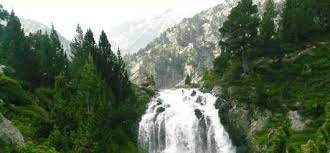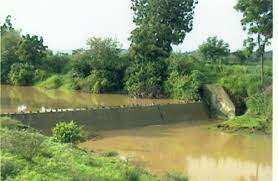Integrated watershed management is a subset of environmental planning which approaches sustainable resource management from a watershed or catchment perspective, in contrast to a piecemeal approach that artificially separates land management from water management.
Integrated watershed management recognizes the existence of ecosystems and their role in supporting flora and fauna, providing services to human societies, and regulating the human environment.
It seeks to take into account complex relationships within those ecosystems i.e. between flora and fauna, between geology and hydrology, between soils and the biosphere, and between the biosphere and the atmosphere.
Integrated watershed management recognizes the cyclic nature of processes within an ecosystem, and values scientific and technical information for understanding and analyzing the natural world.
Importance of Watersheds
Watersheds are important in the following ways,
1. Geopolitical Boundaries
Watersheds or drainage basins have been historically important for determining territorial boundaries, particularly in regions where trade by water has been important.
For example, the English crown gave the Hudson’s Bay Company a monopoly on the fur trade in the entire Hudson Bay basin, an area called Rupert’s Land.
Today, bioregional democracy can include agreements of states in a particular drainage basin to defend it. One example of this is the Great Lakes Commission.
2. Hydrology
In hydrology, the watershed is a logical unit of focus for studying the movement of water within the hydrological cycle, because the majority of water that discharges from the basin outlet originated as precipitation falling on the basin.
A portion of the water that enters the groundwater system beneath the drainage basin may flow towards the outlet of another drainage basin because groundwater flow directions do not always match those of their overlying drainage network.
Measurement of the discharge of water from a basin may be made by a stream gauge located at the basin’s outlet.
Rain gauge data is used to measure total precipitation over a drainage basin, and there are different ways to interpret that data. If the gauges are many and evenly distributed over an area of uniform precipitation, using the arithmetic mean method will give good results.
In the Thiessen polygon method, the watershed is divided into polygons with the rain gauge in the middle of each polygon assumed to be representative for the rainfall on the area of land included in its polygon.

These polygons are made by drawing lines between gauges, and then making perpendicular bisectors of those lines form the polygons.
The isohyetal method involves contours of equal precipitation are drawn over the gauges on a map. Calculating the area between these curves and adding up the volume of water is time consuming.
3. Geomorphology
Drainage basins are the principal hydrologic unit considered in fluvial geomorphology. A drainage basin is the source for water and sediment that moves through the river system and reshapes the channel.
Read Also : Instruments of Environmental Protection
4. Ecology
Drainage basins are important elements to consider also in ecology. As water flows over the ground and along rivers it can pick up nutrients, sediment, and pollutants.
Like the water, they get transported towards the outlet of the basin, and can affect the ecological processes along the way as well as in the receiving water source.
Modern usage of artificial fertilizers, containing nitrogen, phosphorus, and potassium, has affected the mouths of watersheds.
The minerals will be carried by the watershed to the mouth and accumulate there, disturbing the natural mineral balance. This can cause eutrophication where plant growth is accelerated by the additional material.
What are Nature Reserves?
A nature reserve is a protected area of importance for wildlife, flora, fauna or features of geological or other special interest, which is reserved and managed for conservation and to provide special opportunities for study or research.
Nature reserves may be designated by government institutions in some countries, or by private landowners, such as charities and research institutions, regardless of nationality.
In conclusion, nature reserves can be defined as a protected area of importance for wildlife, flora, fauna or features of geological or other special interest, which is reserved and managed for conservation and to provide special opportunities for study or research.
Watersheds are areas of land defined by the flow patterns of rainwater or melting snow and ice when it is determined by topography of a region rather than political boundaries.
It can also be thought of as an area that “catches” water and routes it to a common basin, channel, or network of channels.
In more general terms a watershed is a geographic area where all the water, sediments, and dissolved materials drain to a common outlet like a stream, river system, reservoir, lake, underground aquifer, estuary, wetland, sea, ocean or other body of water.
In this context, watershed management is the process of creating and implementing plans, programs, and projects to sustain and enhance watershed functions that affect the plant, animal, and human communities within a watershed boundary.
Watersheds have its determining factors and very important in various ways. Nature reserves on the other hand, may be designated by government institutions in some countries, or by private landowners, such as charities and research institutions, regardless of nationality.

